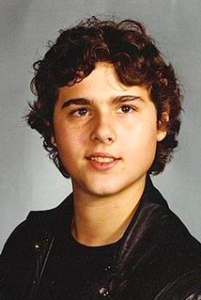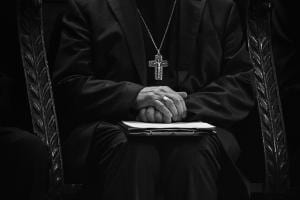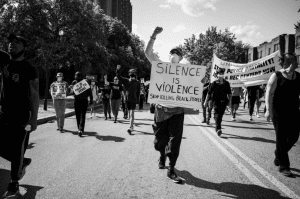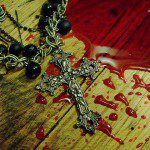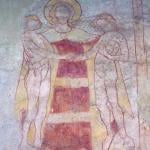THIS SERIES DEALS WITH SEXUAL ABUSE. PLEASE READ WITH CAUTION.
AN INTRODUCTION AND FURTHER DISCLAIMERS
MAY BE FOUND HERE.
O God, who lookest ever with pity and mercy upon thy people: Rise up, we beseech thee, and come to the aid of thy people; put forth thine arm against the wolves that tear at thy flock, dress the wounds of thy lambs, and comfort and keep them unto everlasting felicity; through Christ our Lord. Amen.
Who Did McCarrick Abuse and How?
The exact number of McCarrick’s victims isn’t clear from the report. Identifying details were removed in most cases, to protect the victims’ privacy. McCarrick sexually harassed or assaulted both adults and minors; all were males. The earliest incident the report mentions dates to 1971, while he was still a priest, and the latest seems to be from the early 1990s. It isn’t clear whether he stopped or got better at hiding it. (There may be other explanations for this break in the pattern as well.)
Most victims seem to have been priests or seminarians, mostly in their twenties or thirties; at least eight priests gave testimony for the report. They are identified by number instead of by name. (I gather McCarrick made advances on or assaulted all eight, but I’m not absolutely clear on that.) Several victims needed extensive therapy to recover, and some received cash settlements from the Church.
He didn’t go equally far every time. Some victims didn’t even recognize what he was doing as sexual until they learned of the larger context: at the time, they just felt uncomfortable or thought his behavior was strange. A few left seminary or the priesthood at some point after the abuse; most remained. Nearly all described feeling unable to refuse his advances, often because of his position. This was especially true for seminarians, some of whom feared they might not become priests if they rejected McCarrick sexually. Some witnesses describe group sex, sometimes beginning while the victim was in the room; some report being told “You’re next,” or mocked for not wanting to participate. One or two report blackouts, which aren’t uncommon in abuse victims.
McCarrick groomed a number of targets from a young age. He befriended families and was good at establishing affection and trust; he liked the children to call him “Uncle Ted,” and sometimes insisted on it. (Behavior like this is a standard grooming tactic, forcing a sort of official intimacy the abuser can capitalize on later.) In some cases, he gave minors alcohol. Very few families seem to have grasped what was happening.
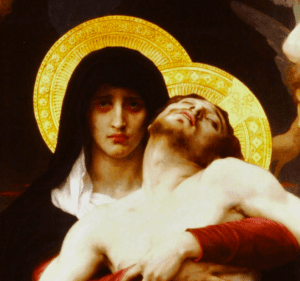
Early Attempts to Report McCarrick
At least one mother (“Mother 1″ in the report) recognized McCarrick’s behavior as predatory in the 1980s. She tried to persuade her husband to break off their relationship with him, but her husband refused to credit her concerns. Feeling the need to do something, Mother 1 wrote letters detailing McCarrick’s behavior and her fears—removing identifying details, since she was afraid he would retaliate. She sent these letters to every US cardinal and to the Nunciature. None took action.
Anonymous letters circulated against him again in the early 1990s. These letters said he was a pedophile, and that the hierarchy knew it and ignored it. These don’t seem to have had anything to do with Mother 1. Victims themselves, or other relatives of victims, may have written them. Or it may have been random mud-slinging, which spattered someone who deserved it by chance. Either way, the few members of the hierarchy who read the letters reportedly dismissed them as groundless.
At least one victim reports accompanying Cardinal McCarrick to a meeting with Pope John Paul II in 1988. He says he told His Holiness (while the Cardinal was out of the room) that McCarrick had been abusing him since childhood. We’ll be returning to this.
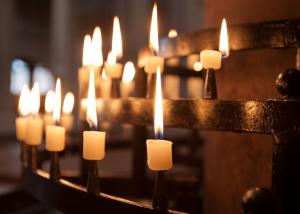
The Problem of “Priest 1”
Priest 1 was one of McCarrick’s victims. He too made a relatively early accusation, in an unusual context that calls for some discussion.
In 1993, Priest 1 confessed to Bishop Edward Hughes, on his own initiative, that he had become involved with two teenage boys at his parish. (Neither the boys nor their families had made complaints at this time.) Priest 1 begged the bishop for help. He alluded to what McCarrick had done to him years before in the course of his own admission of misconduct.
Bishop Hughes referred the priest for treatment, but apparently didn’t inform the civil authorities. Moreover, he disbelieved the accusation against McCarrick, or acted like he did. He later claimed the priest in question had “a history of blaming others for his own problems” in a 2000 letter to Archbishop Montalvo. Montalvo was the US Nuncio at the time, and was investigating rumors about McCarrick, to decide whether to recommend him for the Archdiocese of Washington.

Now, there’s a widespread belief that most abusers were victims of abuse themselves. This is different from the idea that victims are likely to become abusers. This can seem confusing, so consider this analogy. Even if some freak coincidence made most cats black, it wouldn’t follow that most black animals were cats. And conversely, if some huge die-off of black animals happened and most remaining black animals were cats, that wouldn’t mean most cats were black.
Likewise here. Even if most abusers were former victims, that still wouldn’t mean that most victims become abusers in turn. What’s more important is that actually, neither of these beliefs are true. Studies of abusers and victims vary to an extent, but they do establish that (while there is some overlap) most victims don’t become abusers and that most abusers weren’t victimized.
It’s important to make this point, because false ideas about “cycles of abuse” can really damage victims. For example, these tropes might make victims believe they are destined to abuse someone else—which can become a self-fulfilling prophecy. Or they might resort to self-harm, or attempt suicide, which victims are already at high risk for.
So does this mean we should dismiss claims of abuse if the person making them is guilty of abuse, like Priest 1 was? No. The overlap between abusers and victims is small, but it exists. And it’s possible that, in individual cases, abusers are partly reacting to their own trauma. A misplaced desire for revenge, an attempt to make sense of what happened to them by “making it happen again,” a distorted craving to reclaim autonomy by putting themselves in the “more powerful” role—any of these might play a part. The point is, we should neither dismiss these testimonies, nor take them as typical.
Further posts in this series: The Monster and the Mirror; The Bishops’ Gambit; Pope John Paul II; Pope Benedict XVI; Pope Francis; The Venom of Viganò; Den of Thieves; Quo Vadis




